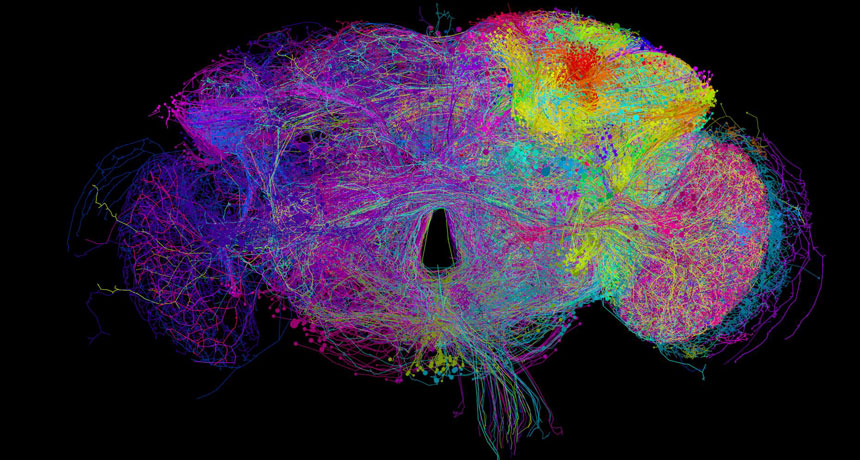This colorful web is the most complete look yet at a fruit fly’s brain cells
Scientists compiled 21 million images of the noggin of Drosophila melanogaster

BRAINBOW Scientists have imaged the fruit fly brain in new detail. Colors highlight the paths of nerve cells that have been mapped so far.
Full Adult Fly Tracing Community, Philipp Schlegel/Drosophila Connectomics Group/Univ. of Cambridge